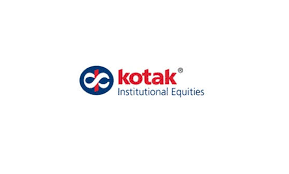 04-03-2021
04-03-2021
Restrictions on banks' ownership in insurance companies may warrant a rethink

 Insurance Alertss
Insurance AlertssRestrictions on banks' ownership in insurance companies may warrant a rethink
Restrictions on banks’ ownership in insurance companies may warrant a rethink. According to unconfirmed media sources, RBI wants banks to limit ownership stakes in insurance companies at a maximum of 20%. In this report, we discuss the symbiotic relationship between banks and bank-promoted insurance companies that augurs well for banks, insurance companies and policyholders. Ownership stake in insurance companies may not jeopardize the interest of bank deposit holders, in our view.
RBI has likely concerns on banks’ ownership in insurance companies
According to unconfirmed media sources, RBI wants banks to limit ownership stakes in insurance companies at a maximum of 20%. The news article highlights that RBI’s discomfort with lenders increasing stake in insurance companies is likely because these businesses are capital guzzlers; RBI will like banks to focus on the main areas of business.
Axis’s stake in Max Life capped at 20%
The recently concluded Max-Axis transaction suggests that RBI may be comfortable with banks (along with 100% subsidiaries) owning up to 20% stake in the insurance businesses. It appears that the regulator may prescribe this rule for existing players as well. Current regulations require banks to own over 50% or 30% (or below) stake in insurance companies.
Large increase in float, if this is implemented
If implemented, this could significantly increase float in these stocks, though we would expect RBI to provide a longer timeline for complying with the same. Exhibit 1 shows that float of Rs1.2 tn will be released from reduction in stake in top listed life and general businesses owned by banks and large NBFCs (HDFC, SBI, both ICICIs).
Banks owning insurance has been a win-win relationship for all; positives cannot be ignored
We expect RBI to consider the positives of banks’ ownerships in insurance companies before making a final decision on imposing ownership restrictions.
Insurance stake sales have supported banks’ provisions in challenging times. Large value unlocking in insurance companies have helped banks’ earnings in challenging quarters and provide buffer against NPLs. Exhibit 2 shows that HDFC and ICICI Bank have recognized large gains from stake sales in their life and general insurance businesses; these gains have been utilized to create provisioning buffers. During FY2016-18, HDFC used over 40% of such gains to create provisions/ECL; such capital gains contributed ~30-40% of annual provision for ICICI Bank.
Fee income from distribution of life insurance products is ~2-3% of revenues. Banks earn large fee income from sale of insurance policies; Exhibit 3 shows the insurance distribution income earned by large banks comprises 2-3% of income and 5-15% of PBT.
Bancassurance helps insurance companies immensely; ownership and common brand complement. Bancassurance has emerged as a strong channel for distribution of insurance products. The proprietary channel of insurance companies tends to have high fixed costs as compared to distribution through banks. The banking franchise is large and insurance savings products are a natural fit in its wealth management offering. While bancassurance models can be successfully run even without ownership, historic experience suggests that insurance companies with bank ownerships have been more successful than others. Managements may be generally more inclined towards building bancassurance business at all times rather than merely focusing during savings upcycles. A common brand likely helps in marketing as well. Exhibit 4 shows that the share of bancassurance for private players has increased to 53% in FY2020 from 21% in FY2009. The top four players have gained market share in individual market share for private players to 63% from 44% during the period, largely driven by their banking partner/shareholders.
Policyholders are willing to pay higher premium for their trusted brands
Policyholders tend to prefer insurance companies with strong promoters; as such, insurance companies promoted by large banks command higher trust with customers. Exhibit 5 compares annual premium charged by various players for term cover of Rs10 mn; this suggests that insurance companies promoted by banks and large promoters (Aditya Birla Group or Tata) command a higher premium rates as compared to the rest; yet, these players are preferred by customers due to implied trust and hence continue to dominate the market.
Capital is not really a concern for insurance companies
- Insurance ownership may not jeopardize interest of bank depositors. The news article suggests that RBI is concerned that insurance is a capital guzzling sector. Apart from minimum capital requirements for the banking business, prior regulatory approval for investments in insurance companies can keep any capital flow to subsidiaries in check and not jeopardize interest of the depositors, in our view.
- Life companies may not need much capital, negligible investments by banks in past five years. Life insurance companies need most capital in initial years due to high new business strain on account of low operating leverage and higher reserving requirements. As reserves release over the years, the business can be self-supportive on the capital front. Exhibit 6 shows that banks have made negligible investments in insurance subsidiaries over the past five years.
- Most large life players placed well on solvency. Exhibit 7 shows the solvency ratio of key players. A gradual decline over the years reflects increase in the protection business, from negligible levels about 3-4 years back; we don’t rule out capital issuance in case of high multi-year growth in protection; for now companies may consider raising tier-II capital. The blip in FY2020 was due to MTM hit on equity investments, which bounced back in 1QFY21. However, general insurance companies may require capital in their high growth phase.
- Raising capital from private/public markets may not be a challenge. Insurance is one of the preferred sectors by investors due to its long-term growth prospects. As such, insurance companies may not be challenged to raise capital from private and/or public markets. Recent proposed increase in FDI limits to 74% will open further avenues for investors of insurance companies.
Source: Kotak Institutional Equities Research
